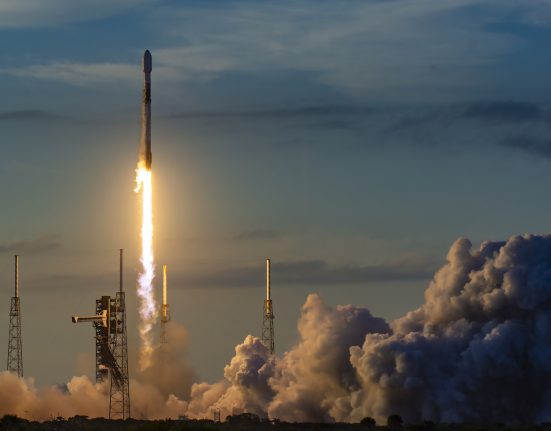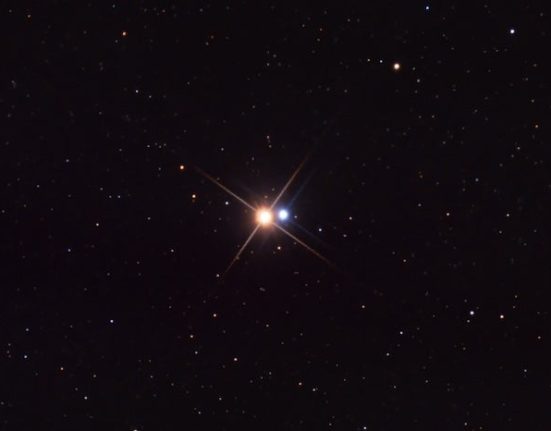
SpaceX completed its second launch of the weekend with a mission to Space Norway. The company launched its Falcon 9 rocket for the Arctic Satellite Broadband Mission (ASBM).
The satellites, designated ASBM-1 and ASBM-2, are designed to provide military satellite communications and commercial broadband connectivity in the North Polar region. Liftoff occurred at 19:02 PDT (22:02 EDT 0202 UTC).
The Falcon 9 first-stage rocket supporting the mission, B1061 in the SpaceX fleet, launched for the 22nd time, tying it with B1062 for the most flights of a first-stage rocket. B1061 previously launched Crew-1 and Crew-2 astronaut missions; two Transporter rideshare launches; and 10 Starlink flights, among others.
About eight and a half minutes after liftoff, B1061 will land on SpaceX's drone ship, 'Of Course I Still Love You.' This marked the 100th landing of a booster on this drone ship, as well as the 337th landing of a booster to date.
Communication in the Arctic
The two ASBM satellites were built on Northrop Grumman's GEOStar-3 satellite bus and each weigh about two tons (about 4,000 pounds). They measure about 3 x 3 x 4 meters (9.8 x 9.8 x 13.1 feet) and with their solar panels extended, have a total wingspan of 27 meters (88.6 feet).
The satellites will be launched into a highly elliptical orbit, allowing them to access the Arctic region, which many other geostationary satellites cannot reach. Space Norway, one of the main partners behind the satellites, said they will use a so-called “three-apogee period,” with a maximum orbital altitude of 43,500 km and a minimum of 8,100 km.
The satellites will operate in the same orbital plane eight hours apart and at an inclination of 63 degrees. The ASBM program was created in 2019 to provide connectivity to the area north of 65 degrees north latitude.
The mission is a joint operation between the U.S. Space Force, Northrop Grumman and Space Norway, a company owned by the Norwegian Ministry of Trade, Industry and Fisheries. On board are multiple payloads for the U.S. and Norwegian militaries, as well as a radiation monitor for the European Commission.
Commercial communications company Viasat also has its Ka-band Global Xpress (GX) payload on board, which will enable it to “deliver seamless broadband to aerospace, maritime and land users operating in the High North,” according to Northrop Grumman. Viasat said the GX10A and GX10B payloads mark “the first time the Viasat network will incorporate payloads into this orbit that will provide dedicated Arctic coverage.”

The U.S. Space Force’s Space Systems Command has delivered its two payloads for integration in 2022. These are the Enhanced Polar Systems Recapitalization (EPS-R) payloads. They were built by Northrop Grumman’s Strategic Space Systems Division and are described as “an extremely high frequency (EHF) military satellite communications (MILSATCOM) system designed to provide secure, anti-jamming, low probability of detection/interception 24/7 communications for U.S. forces operating in the Arctic region.”
Hosting payloads aboard these Norwegian satellites allowed SSC to operationalize its capabilities “three years ahead of schedule, potentially saving up to $900 million.” This will also be the first time a Space Force payload has been hosted on a non-U.S. satellite.
“This successful payload delivery highlights the diligent work performed by the entire government and contractor team,” Ernest Finney, EPS-R payload manager within SSC’s Military Communications and Positioning, Navigation and Timing directorate, said in a 2022 statement. “We are excited to begin integration and testing with the host space vehicles and deliver this critical operational capability to the warfighter.”

Another payload on board is the Control and Planning Segment (CAPS), which is described as a “single software foundation, consolidating command, control and planning for its legacy Enhanced Polar System (EPS) segment and future EPS Recapitalization (EPS-R) payloads.” That was also provided by Northrop Grumman.
“Achieving this key milestone was truly a joint effort and speaks to the excellent teamwork between Northrop Grumman and our EPS-R program office. The team received and coordinated a tremendous amount of technical data that was critical to verifying all segment and element requirements were met. We look forward to the new ground system becoming operational,” said 1st Lt. Brooke Kunzelman, SSC EPS-R ground segment lead, in a 2023 statement.
The twin spacecraft will also carry a military X-band broadband payload for the Norwegian Armed Forces.














Leave feedback about this